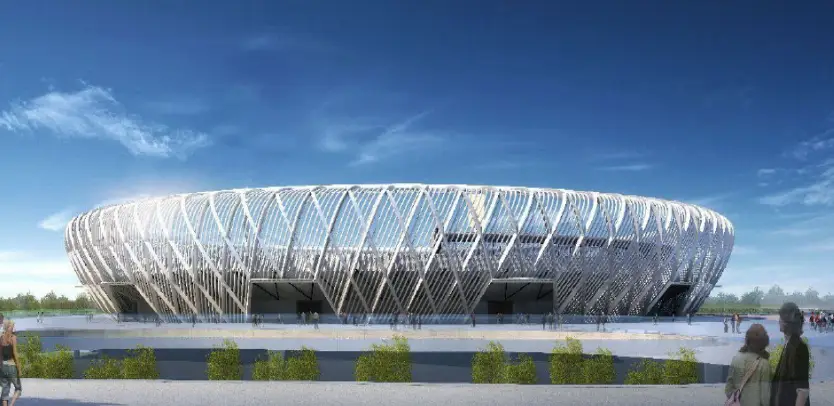Effective sports field lighting is critical for optimizing athlete performance, ensuring spectator safety, and minimizing environmental impact. As lighting technology evolves, standards now emphasize a holistic approach that balances illuminance, glare control, energy efficiency, and ecological considerations. Drawing on advancements from LED innovation to glare modeling, this article explores key requirements and emerging trends in sports field illumination.
1. Illuminance Standards and Uniformity
Illuminance levels remain foundational, with requirements varying by sport and facility type. For instance, professional soccer fields may demand 750–1,500 lux for televised matches, while recreational fields often require 200–500 lux. Uniformity ratios (average-to-minimum illuminance) of 0.7–0.8 are essential to eliminate shadow zones that disrupt gameplay. Early standards focused solely on horizontal illuminance, but modern designs incorporate vertical illuminance to enhance depth perception for fast-moving sports like volleyball.
Recent critiques argue that overreliance on illuminance metrics neglects user comfort and adaptive needs. For example, spectators in multi-use arenas may prioritize glare reduction over maximum brightness, necessitating dynamic lighting systems that adjust to event-specific demands.
2. Glare Mitigation and Visual Comfort
Glare remains a top concern, as excessive luminance contrasts can impair athletes’ reaction times and spectator experiences. The Unified Glare Rating (UGR) model, validated for indoor volleyball, shows strong correlations with subjective discomfort, even when performance metrics remain unaffected. Key strategies include:
Low-Luminance Fixtures: Positioning high-intensity LEDs outside direct sightlines to reduce retinal adaptation stress.
Background Luminance Balancing: Ensuring ambient light levels minimize contrast with luminaires, a factor shown to predict discomfort better than UGR alone.
Diffusers and Reflective Cavities: Techniques like Lambertian-like light distribution improve uniformity by 300% while softening harsh edges.
3. LED Technology and Adaptive Systems
LEDs dominate modern sports lighting due to their tunable spectra, longevity, and energy efficiency. Customizable wavelengths enable compliance with ecological regulations—for example, using amber LEDs to protect nocturnal wildlife without compromising human visibility. Retrofit projects, however, face challenges:
Thermal Management: Poor heat dissipation in retrofitted fluorescent fixtures can shorten LED lifespan.
Color Consistency: Early LED retrofits in hospitality settings struggled to match incandescent warmth, but advances in color rendering (CRI >80) now satisfy aesthetic demands.
Smart systems further enhance adaptability. Wireless controls, tested in office retrofits, enable centralized dimming and real-time adjustments based on occupancy or daylight availability. The Langley Events Centre’s LED upgrade demonstrated how color-changing fixtures expand theatrical possibilities while maintaining sports-specific illumination.
4. Physiological and Environmental Considerations
Lighting impacts circadian rhythms and task performance. Studies on industrial workers reveal that optimized lighting improves job satisfaction and problem-solving by reducing eye strain and enhancing ambience. For athletes, spectral tuning can mimic daylight to maintain alertness during evening matches, though excessive blue light post-game may disrupt sleep cycles.
Environmental stewardship is equally critical. Traditional sodium lamps, once favored for low glare, are being phased out due to poor efficiency. Modern LEDs not only reduce energy use by 40–60% but also allow spectral customization to meet regional wildlife protection guidelines.
Sports field lighting has transitioned from a one-size-fits-all approach to a multidisciplinary science integrating optics, human biology, and ecology. By prioritizing glare reduction, adaptive controls, and sustainable practices, modern systems enhance both performance and safety while reducing environmental footprints. As smart technologies and health-focused designs gain traction, the next frontier lies in harmonizing these elements to create inclusive, future-ready venues.
